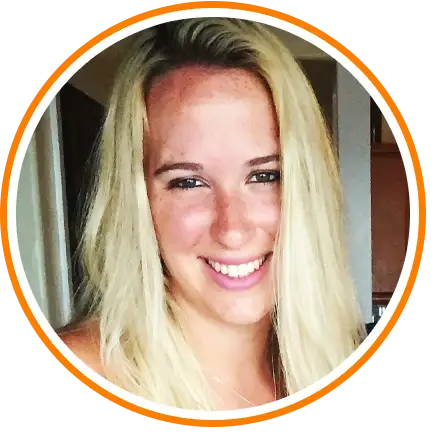
Lexi's story
reflex sympathetic dystrophy - RSD updated 11/21/18
When Lexi twisted her ankle and fell during a high school field hockey game in October 2010, she assumed she had suffered a simple sprain. But as the weeks and months went by, the pain lingered and even worsened. Lexi's doctors eventually theorized that the sprain had aggravated an imperfectly developed growth plate, leading to a life-altering diagnosis of reflex sympathetic dystrophy (RSD), also known as complex regional pain syndrome (CRPS).
At a time when her teenage friends were absorbed by sports, school, friendships and jobs, Lexi was battling pain that came and went unpredictably. "I had waves of it," Lexi recalls. "I would be on crutches, then off crutches, then back on crutches again. I took a wheelchair to school and used it to get to classes. I missed at least two months of school."
For months, Lexi's pediatric physicians prescribed conservative treatment that had Lexi juggling and coping with multiple medications, some of them quite potent. Finally, impatient and with no sign of relief, Lexi and her family sought help from Mayfield neurosurgeon George Mandybur, MD, and Marc Orlando, MD, a Mayfield pain and rehabilitation specialist.
Lexi first saw Dr. Orlando, who outlined a "Plan A, B & C" and followed her closely for several months. Plan A involved nerve blocks, which relieved her pain for about a week each time but were not a permanent solution. Plan B involved an antidepressant, which Dr. Orlando thought might counteract her with pain sensations but which produced side effects and no relief. Finally, Dr. Orlando recommended Plan C, a spinal cord stimulator. The surgically implanted device interrupts pain signals and prevents them from reaching the brain.
Lexi was unafraid of the surgery. "Being so young, I wanted answers," she says. "I was thinking, am I never going to move like a young person again?"
Dr. Orlando gave Lexi a trial run by testing the stimulator in a minimally invasive procedure at Cincinnati's Good Samaritan Hospital. He carefully inserted electrodes through her skin and into the epidural space, the outermost portion of the spinal canal, and then placed the pulse generator and battery pack in a temporary position on her belt, like a pager. The test produced the intended results. "The pain slowly faded each day, up until the last day when I could walk around the whole mall and not have any pain," Lexi says. "It was amazing."
At that point, Dr. Mandybur stepped in. In a procedure performed at The Mayfield Spine Surgery Center, he surgically anchored the electrodes, threading the wires to the pulse generator and battery pack, which he also implanted under her skin.
For Lexi, there was another benefit. She was the first patient in Ohio to receive an advanced type of stimulator that incorporates an accelerometer similar to those used in smart phones and gaming technology. The new AdaptiveStim™ with RestoreSensor™ is manufactured by Medtronic, Inc.
"The advantage of the new sensor stimulator over previous stimulators is that it will 'learn' how to adapt to the individual's positioning," Dr. Mandybur says. "So as the patient changes positions, mainly from sitting to standing to lying down, the multi-axis system understands the patient's position through an advanced accelerometer type of technology."
For Lexi, the stimulator has been a life-changer. The wheelchair became a thing of the past, and the crutches were banished to an obscure corner of her closet. She went back to being a teenager again, enjoying her friends and high school clubs, tutoring after school, waiting tables four days a week, and thinking about colleges and her future. Her days in contact sports such as field hockey were over, but she returned to physical activity by walking and hiking.
Five years after her surgery, Lexi is still pain free. “The stimulator has been a life changer,” she says “I am more active today than ever before, hiking, jogging, kayaking -- anything outdoors!”
And in the spring of 2018, the stimulator was removed. Lexi had been completely pain-free for nearly a year, even when the stimulator was turned off. "This can happen with RSD," Dr. Mandybur explains. "It can eventually burn itself out, though not always."
And so ends this story!
Says Lexi: "Most of my care team was exactly the same as back in 2011, which makes it even more special!"
Hope Story Disclaimer -"Lexi's Story" is about one patient's health-care experience. Please bear in mind that because every patient is unique, individual patients may respond to treatment in different ways. Results are influenced by many factors and may vary from patient to patient.

George Mandybur, MD, above, performed the surgical procedure Dec. 28, 2011 at The Mayfield Spine Surgery Center. He removed the stimulator several years later, after Lexi had completely healed.
Related links:
Top doctors, best doctors, your doctors: Mayfield physicians recognized for excellence
